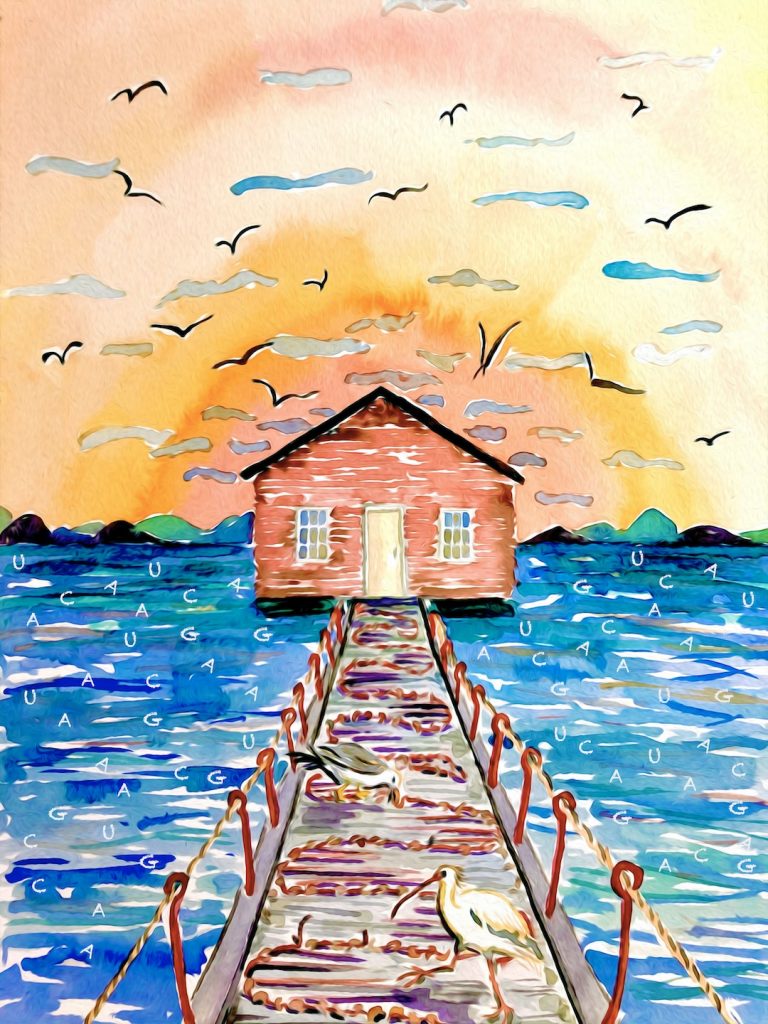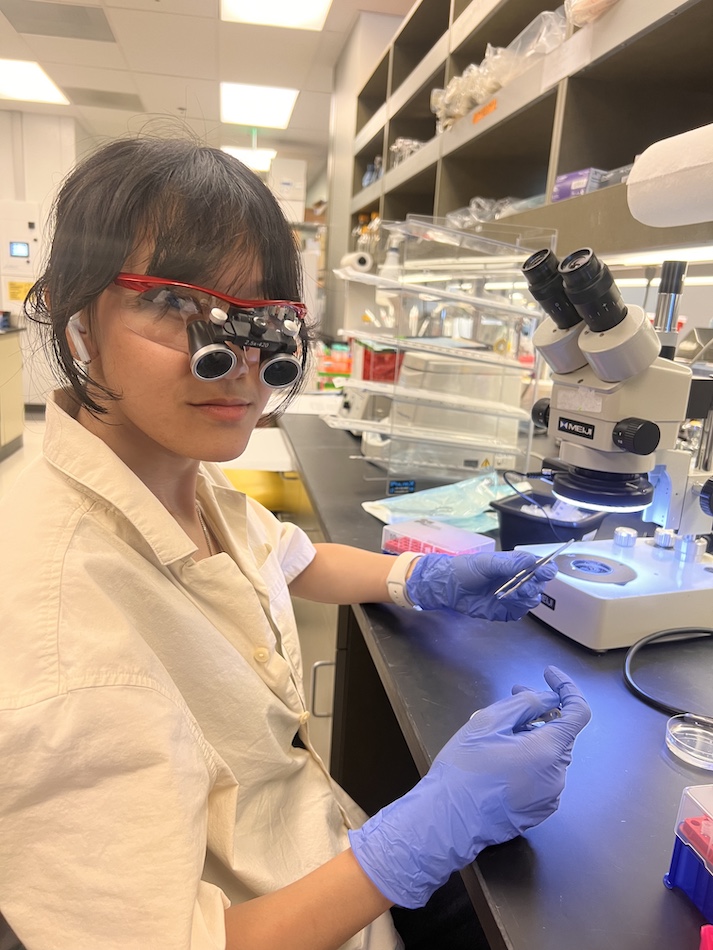In March, La Jolla Institute for Immunology (LJI) and Scripps Research scientists published a fascinating new Ebola virus study. Their work shows how Ebola virus uses a protein called polymerase to hijack host cell proteins. In fact, there’s some evidence that an experimental drug therapy might interrupt this process and save lives in future Ebola virus outbreaks.
When the research was published in the March 22 issue of the journal Cell Reports, the journal featured an unusual watercolor on its cover. This vivid painting was created by Scripps Research graduate student Jingru Fang, who spearheaded the new Ebola research in the Saphire Lab at LJI.
Journals often ask scientists to submit potential cover images to accompany their studies, but it is a rare honor for a cover image to actually be chosen. It’s even less common for the first author of a study to create the artwork herself.

In this Q&A, Fang explains why she chose watercolors to depict research—and shares the personal meaning behind her cover painting.
Question: How long have you been painting?
Fang: I started painting using watercolors eight years ago and using oil pastels five years ago.
Q: What do you like about painting—and using watercolors in particular?
Fang: I like painting because I can express myself using a combination of colors, shapes, and atmospheres better than language. It’s an outlet and a monologue. I feel that most paintings leave room for others to interpret, or a painting doesn’t even have to be understood by others, and it’s okay and allowed.
Painting gives me positive energy and helps me to preserve beautiful moments, to extend the shelf life of happy feelings in my life.
Watercolors are more affordable compared to oil or gouache: a watercolor painting set can basically last forever, but you need to consume more paint per piece of work for the other two types of media. I like the transparency of watercolor paint, the same color can have different shades depending on how much water you add to it. So even with one color you can create a very powerful scene. It’s fun and rewarding.
Q: How did you choose this imagery for the cover illustration?
Fang: I remember seeing a beautiful photograph online of a house on the water, which sits at the end of a pier. I sort of borrowed that idea and used it as the foundation for my illustration. The Ebola virus polymerase resembles the house because the polymerase serves as a source for virus propagation by replicating viral genomes. The polymerase needs to use nucleotides, which are spread in the water next to the house, as building blocks to extend RNA chains. On top of that, I added more elements to this illustration, such as colorful clouds in the sky. Those elements represent host cell proteins that are functionally or physically connected to the virus polymerase.
I used a gradient of sunlight, the orange spectrum coming from the house, to reflect proximity labeling, which is a biochemical approach I used to pull out cellular proteins that interact with the virus polymerase. On the other side, I have the pier extended from the house (polymerase), where the single stranded RNA chain is coming from. I drew two birds attracted to the “RNA chain.” Those are the two host cell factors we chose from our polymerase interactome to characterize further in our manuscript. These two host factors are attracted to “RNA” because both are involved in the cellular mRNA decay pathway, a way used by the cell to degrade RNA.
From another perspective, I like to add elements to my paintings from real life. For example, on my daily commute taking the I-5 N, sometimes I see large flocks of birds flying around the Pacific Beach area. It’s beautiful. No matter how our lives are affected by the pandemic, when we look up, we can still see birds flying, and now flowers blooming, which I am very grateful for.
I also wanted to show my gratitude in my painting to my mentors. In fact, I portrayed myself as the house because my last name in Chinese means “house.” I have two extremely supportive mentors in my Ph.D. journey, whom I look up to, so they became the sky and the ocean surrounding the house in my paintings.
Q: What was your reaction to learning that your image would be the journal cover?
Fang: I had the same reaction as I did when I first saw the bioluminescent waves at Torrey Pines State Park. It feels unreal, but I was absolutely delighted.


